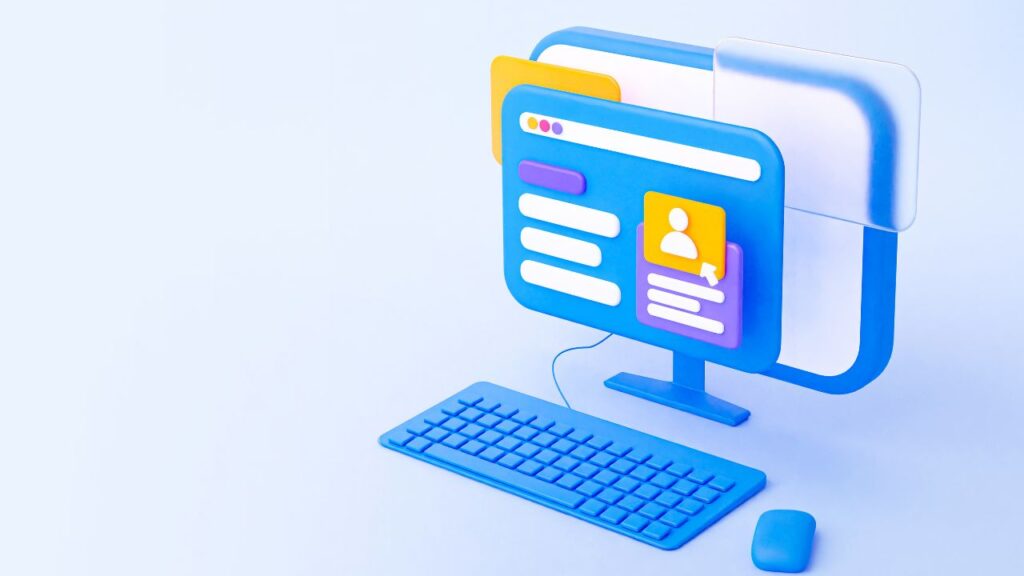Protect your web applications with advanced web application security solutions to guard against cyberattacks, data breaches, and API vulnerabilities in 2025.

Web application security is the process of keeping websites, apps, and APIs safe from threats. It covers a lot of different areas, but its main goals are to keep web applications running smoothly and to keep businesses safe from cyberattacks, data theft, unfair competition, and other bad things.
Because the Internet is global, web apps and APIs can be attacked from many places and at different levels of scale and complexity. So, web application security includes a lot of different methods and a lot of different parts of the software supply chain.
What are some common security risks for web apps?

Web applications can be attacked in different ways, based on the attacker’s goals, the work of the organisation being attacked, and the security holes in the application. Some common types of attacks are:
- Zero-day vulnerabilities: These are flaws in an app that the people who made it didn’t know about, so there is no way to fix them. We now see more than 20,000 new security holes every year. Attackers try to take advantage of these holes as soon as possible, and then they often try to get around the defences that security companies have put in place.
- Cross-site scripting (XSS): XSS is a security hole that lets an attacker add client-side scripts to a webpage and get direct access to sensitive information, pretend to be the user, or trick the user into giving up sensitive information.
- Offering strong authentication and authorization: SQL injection, or SQLi, is a way for an attacker to take advantage of flaws in the way a database handles search queries. Attackers use SQi to get to information they aren’t supposed to see, change or add user permissions, or destroy or change private data in other ways. Find out more about how to stop SQL attacks.
- Denial-of-service (DoS) and distributed denial-of-service (DDoS) attacks: Attackers can flood a server or the infrastructure around it with different types of attack data from a number of different directions. As soon as a server can’t handle incoming requests properly, it starts to act slowly and eventually stops letting legitimate users’ requests go through.
- Memory corruption: Memory corruption happens when a page in memory is changed by accident, which could cause the software to act in strange ways. Bad people will try to find memory corruption and use bugs like code injections and buffer overflow attacks to take advantage of it.
- Buffer overflow: This is a strange thing that happens when software writes data to a buffer, which is a set area in memory. When the buffer’s capacity is exceeded, data is written over adjacent memory locations. This behaviour can be used to put harmful code into memory, which could leave the target machine open to attack.
- Cross-site request forgery (CSRF): This is when someone tricks someone else into making a request that uses their authentication or authorization. Someone who doesn’t have permission to use a user’s account can send a request as that user. If someone gets into a user’s account, they can take important information out, delete it, or change it. Accounts with a lot of power, like those of administrators or executives, are often targeted.
- Credential stuffing: Attackers can use bots to quickly enter a lot of stolen usernames and passwords into the login page for a web service. If credential stuffing gives the attacker access to a real user’s account, they may steal the user’s data or make fraudulent purchases in the user’s name.
- Page scraping: Attackers may also use bots to steal information from webpages on a large scale. They may use this content to gain a pricing edge over a rival, imitate the page owner for malicious purposes, or other reasons.
- API abuse: APIs, or Application Programming Interfaces, are software that allow two applications to interact with each other. They might have bugs like any other kind of software, which would let attackers send harmful code into one of the apps or steal private data as it moves from one app to another. As API use grows, this type of attack is becoming more common. The OWASP API Top ten list was a short and sweet summary of the most important API security risks that businesses face right now.
- Shadow APIs: Development teams work quickly to meet business objectives, frequently building and publishing APIs without telling security teams. These unknown APIs may expose sensitive business data, operating in the “shadows” as security teams tasked with protecting APIs are unaware of their existence.
- Third-party code abuse: Many modern web applications use a variety of third-party tools — for example, an ecommerce site using a third-party payment processing tool. If attackers find a vulnerability in one of these tools, they may be able to compromise the tool, and steal the data it processes, prevent it from functioning, or use it to inject malicious code elsewhere in the application. One type of this attack is the magecart attack, which steals credit card information from payment processors. It’s also possible to think of these attacks as browser supply chain attacks.
- Misconfigured attack surfaces: An organization’s attack surface is all of its IT assets that can be hacked, such as servers, devices, SaaS, and cloud services that can be reached from the internet. Some parts of this attack surface may still be open to attack if they are missed or set up incorrectly.
What are some important ways to keep web applications safe?

As was already said, web application security is a big field that is always changing. As a result, the best ways to do things in the field change as new attacks and weaknesses show up. But there are so many threats on the Internet these days that no company can get by without certain “table stakes” security services that are tailored to their needs:
- DDoS mitigation: DDoS mitigation services sit between a server and the public Internet, using specialized filtration and extremely high bandwidth capacity to prevent surges of malicious traffic from overwhelming the server. These services are important because many modern DDoS attacks deliver enough malicious traffic to overwhelm even the most resilient servers.
- Web Application Firewall (WAF): Which filter out traffic known or suspected to be taking advantage of web application vulnerabilities. WAFs are important because new vulnerabilities emerge too quickly and quietly for nearly all organizations to catch on their own.
- API gateways: Which help identify overlooked ‘shadow APIs,’ and block traffic known or suspected to target API vulnerabilities. They also help manage and monitor API traffic. (Learn more about API security.)
- DNSSEC: A protocol which guarantees a web application’s DNS traffic is safely routed to the correct servers, so users are are not intercepted by an on-path attacker.
- Encryption certificate management: In which a third party manages key elements of the SSL/TLS encryption process, such as generating private keys, renewing certificates, and revoking certificates due to vulnerabilities. This removes the risk of those elements going overlooked and exposing private traffic.
- Bot management: Which uses machine learning and other specialized detection methods to distinguish automated traffic from human users, and prevent the former from accessing a web application.
- Client-side security: Which checks for new third-party JavaScript dependencies and third-party code changes, helping organizations catch malicious activity sooner.
- Attack surface management: actionable attack surface management tools should provide a single place to map your attack surface, identify potential security risks, and mitigate risks with a few clicks.
What application security best practices should organizations expect from their vendors?
Web developers can design and build applications in ways that prevent attackers from accessing private data, fraudulently accessing user accounts, and performing other malicious actions. The OWASP Top 10 list captures the most common application security risks developers should be aware of. Practices to prevent these risks include:
- Requiring input validation: Blocking improperly formatted data from passing through the application’s workflows helps prevent malicious code from entering the application via an injection attack.
- Using up-to-date encryption: Storing user data in an encrypted fashion, along with using HTTPS to encrypt transmission of inbound and outbound traffic, helps prevent attackers from stealing data.
- Offering strong authentication and authorization: Building in and enforcing controls for strong passwords, offering multi-factor authentication options including hard keys, offering access control options, and other practices make it harder for attackers to fraudulently access user accounts and move laterally within your application.
- Keeping track of APIs: Tools exist to identify overlooked ‘shadow APIs’ that could constitute an attack surface, but API security becomes easier when APIs never get overlooked in the first place.
- Documenting code changes: Which helps security and developer teams fix newly introduced vulnerabilities sooner.
How does Web Jainya keep web applications secure?

The expert team of Web Jainya is offer the security services listed above, including DDoS mitigation, a Web Application Firewall, API protection, DNSSEC, Managed SSL/TLS, Bot management, client-side protection, and more.
These services are all designed to run from any data center in our network, allowing them to stop attacks close to their source. They’re integrated with our website performance services, so adding new security protections never slows traffic down. In addition, all of these services work with all kinds of website infrastructure, and can often be spun up in minutes.
Learn more about application security solutions contact for a Web Jainya plan.

Comments are closed.